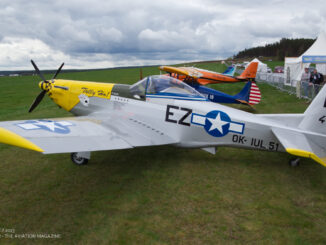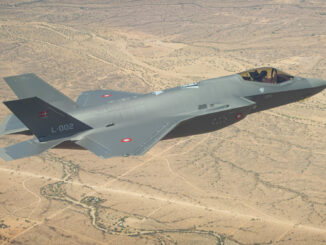
Eurocopter AS365 N3+ Dauphin (c/n: 7013, ´42´ of the Lithuanian Air Force), static display at Galileo SAR Meet 2023, Nordholz, August 2023.
The history of the Dauphin helicopter dates back to the late 1960s and one of the French aviation manufacturers at the time, Sud Aviation. At the end of the decade, the company has already introduced into market its two new rotorcraft designs – SA 330 Puma, that made its first flight on 15th April 1965, and SA 341 Gazelle, which followed on 7th April 1967. Both helicopters, in a short time, achieved commercial success.
Nevertheless, the Sud Aviation management was convinced that there is still a possibility to create another, already the third type of rotorcraft, to fulfil the niche between the mid-size, twin-engine Puma and light, single-engine Gazelle. The new helicopter was designated SA 360 Dauphin (English: dolphin) and had to be powered by a single turboshaft engine.
In 1970, Sud Aviation merged with Nord Aviation and SÉREB to create the Aérospatiale company, but the works on new the helicopter continued. The Dauphin prototype successfully performed its maiden flight on 2nd June 1972. The rotorcraft was not only filling the imaginary gap between two aforementioned constructions, but also drew on previous Sud Aviation experiences and developments. For example, the SA 360 adopted fenestron tail rotor from the Gazelle and main rotor from the Alouette III.
Initially, the new helicopter was powered by Turbomeca Astazou XVI engine. However, the test flights revealed an unacceptable high level of vibrations that was finally solved by changing the main rotor blades and replacing the engine for more powerful Astazou XVIIIA.
In May of 1973, the modified Dauphin was disclosed to general public during Paris Air Show. Yet in the same year, the second flying prototype of the SA 360 broke three world speed records in FAI class E-1d (helicopters with maximum take-off weight between 1,750 kg and 3,000 kg). In 1974, the rotorcraft was finally approved for serial production as the SA 360C Dauphin.
However, the helicopter with maximum take-off weight of 3,000 kg but powered by just one engine failed to gain any interest among potential customers. Individual examples were acquired by the German police and HEMS, the Royal Hong Kong Auxiliary Air Force and some private operators. Eventually, production of the SA 360C was ceased in 1981 after manufacturing less than forty examples.
Faced with weak interest in the Dauphin, the Aérospatiale company launched a redevelopment programme focused on upgrading the SA 360 into a twin-engine helicopter. It began as early as in 1974, only a year after the rotorcraft was officially presented on the market.
The prototype of redesigned rotorcraft performed its maiden flight already on 24th January 1975. The helicopter was equipped with two Turbomeca Arriel 1 turboshaft engines.
However, the new helicopter officially entered the market only three years later, in December of 1978, designated SA 365 Dauphin 2. The initial variants were powered by two Arriel 1A1 engines (Dauphin C and C1) but as quickly as the following year, the upgraded version powered by two 1C turboshafts was developed. It entered service in 1982, as SA 365 N, and featured new fenestron rotor, retractable landing gear, as well as greater use of composite materials in its construction.
Contrary to the single-engine Dauphin, the two-engine Dauphin 2 was a great success. The helicopter was acquired by several civil, military and government operators all over the world, being used for VIP and corporate transport, HEMS and police duties or search and rescue operations. In addition, a dedicated military variant was developed, known as AS565 Panther, as well as a specialized SAR helicopter for naval operations, designated HH/MH-65 Dolphin. In 1981, a license production of the Dauphin 2 was launched in China, under designation Harbin Z-9.
In 1991, following the creation of Eurocopter group, official designation of the helicopter was changed to Eurocopter AS365 Dauphin. At the end of 1990s, the company introduced a successor to the Dauphin, designated EC 155 (currently known as Airbus H155).
In 2022, production of the AS356 Dauphin was ceased, after manufacturing more than 1,100 examples of that helicopter, in all variants.
The AS365 N3+ variant of the Dauphin, featured within our Photo of the Week series, was for the first time introduced into service in 2009. The helicopter was equipped with redeveloped, modern avionics suite and new autopilot.
In 2013, Lithuania ordered three examples of the AS365 N3+ for the country´s renewed search and rescue service. The first of those rotorcraft was delivered to the Lithuanian Air Force on 2nd June 2015, followed by other two at the end of the year.
An interesting fact is, that Lithuanian Air Force purchased the Dauphin helicopters with support of the Ministry of Environment and the European Union funds. Thus, apart from their main task of SAR services, the Lithuanian AS365 are committed to fly at least 75 hours per year for the Ministry of Environment, performing environmental observation and control duties.



